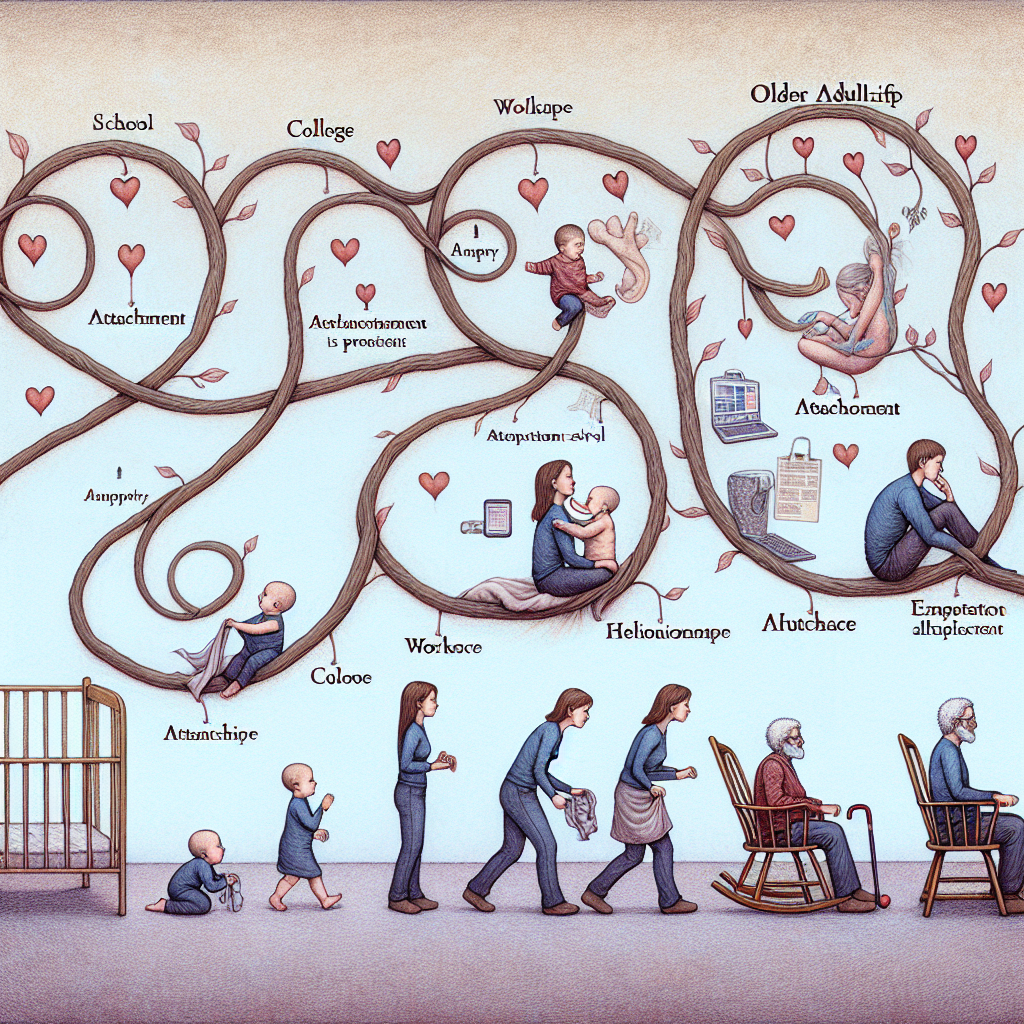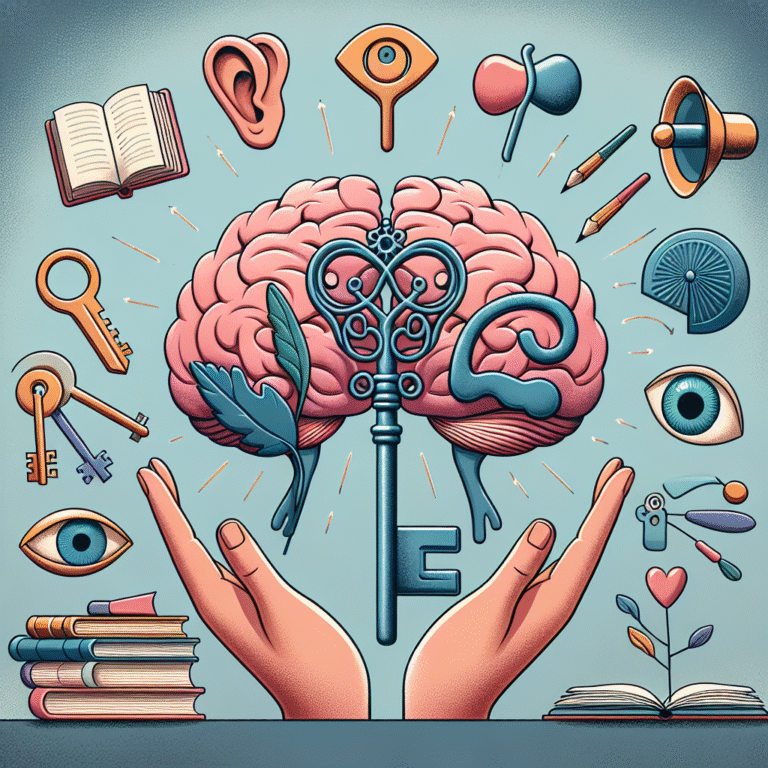
From Infancy to Adulthood: The Lasting Impact of Attachment Styles on Relationships
Introduction
Imagine a world where the quality of your relationships is predetermined—shaped not by your choices but by the bonds you formed in your earliest years. From Infancy to Adulthood: The Lasting Impact of Attachment Styles on Relationships is not just an abstract concept; it’s a profound reality that influences how we connect with others throughout our lives. Understanding attachment styles—secure, anxious, avoidant, and disorganized—can illuminate our relationship patterns, help us navigate conflicts, and foster deeper emotional connections. This article will explore how these attachment styles manifest, their lasting impacts, and how we can cultivate healthier connections in both our personal and professional lives.
Understanding Attachment Theory
Attachment theory, pioneered by psychologist John Bowlby, posits that the bonds we form with our caregivers in infancy set the foundation for our future relationships. These styles are categorized into four types:
- Secure Attachment: Characterized by trust, comfort with intimacy, and effective communication.
- Anxious Attachment: Marked by insecurity, reliance on others for affirmation, and fear of abandonment.
- Avoidant Attachment: Defined by a reluctance to depend on others, often leading to emotional distance.
- Disorganized Attachment: A combination of anxious and avoidant behaviors, often stemming from trauma or loss.
Table 1: Summary of Attachment Styles
| Attachment Style | Key Characteristics | Impact on Relationships |
|---|---|---|
| Secure | Trusting, warm, open | Healthy communication and conflict resolution. |
| Anxious | Overly dependent, clingy | Fear of abandonment, anxiety in relationships. |
| Avoidant | Emotionally distant | Difficulty with intimacy and vulnerability. |
| Disorganized | Fearful, erratic | Unstable relationships, challenges with trust. |
Secure Attachment: The Gold Standard
With secure attachment, individuals develop a strong sense of self-worth and confidence in their relationships. These individuals often excel in social and professional settings, nurturing connections that are both fulfilling and resilient.
Case Study: Mark and Julia
Mark and Julia met during their college years. Both raised in secure environments, they communicated openly about their dreams, insecurities, and challenges. When conflicts arose, they approached them as a team, using effective problem-solving strategies. Their relationship flourished as they built trust and intimacy, ultimately leading to a strong, lasting partnership.
Analysis: Mark and Julia’s case exemplifies how secure attachment manifests in effective conflict resolution and emotional intelligence, providing a foundation for lasting relationships. They demonstrate that healthy communication fosters deeper connections, reinforcing the significance of early attachment experiences.
Anxious Attachment: The Rollercoaster of Emotions
People with anxious attachment often grapple with intense emotions and a constant need for reassurance. This pattern can lead to ups and downs in relationships, as individuals may cling to their partners while simultaneously fearing abandonment.
Case Study: Sarah and Tom
Sarah grew up with inconsistent caregiving, leading her to develop an anxious attachment style. In her relationship with Tom, she often felt insecure, constantly seeking validation. While Tom cared for Sarah deeply, he sometimes found her neediness overwhelming. Their relationship oscillated between deep passion and frustration.
Analysis: Sarah and Tom’s relationship highlights the challenges faced by individuals with anxious attachment. While their emotional connection was strong, the underlying insecurity created friction, illustrating the need for self-awareness and coping strategies to mitigate relationship turmoil.
Avoidant Attachment: Building Walls
Those with avoidant attachment often prioritize self-reliance and may find it challenging to connect emotionally. They tend to evade intimacy, leading to superficial relationships that lack depth.
Case Study: Nathan and Emma
Nathan’s upbringing taught him to be self-sufficient above all. In his relationship with Emma, he struggled to express emotions and often withdrew when challenges arose. Emma, craving connection, felt isolated and frustrated by Nathan’s emotional distance.
Analysis: Nathan and Emma’s dynamic is a classic example of avoidant attachment. Nathan’s reluctance to open up created a barrier, limiting their potential for a deeper connection. Understanding these patterns can empower individuals to work on their vulnerabilities and foster more meaningful relationships.
Disorganized Attachment: The Struggle for Stability
Disorganized attachment often arises from traumatic experiences, creating a confusing blend of anxious and avoidant behaviors. Individuals may struggle to navigate relationships, leading to erratic behaviors.
Case Study: Alex and Maya
Alex’s traumatic childhood made forming stable relationships difficult. In her relationship with Maya, she oscillated between seeking closeness and pushing away, causing emotional turmoil for both partners. Their interactions became a cycle of confusion, with neither understanding the root of their struggles.
Analysis: Alex and Maya’s relationship illustrates how disorganized attachment can lead to chaotic dynamics. Understanding the impact of their early experiences can pave the way for healing and healthier interactions.
The Impact of Attachment Styles on Adult Relationships
Emotional Intimacy
Understanding From Infancy to Adulthood: The Lasting Impact of Attachment Styles on Relationships highlights how attachment styles influence emotional intimacy. Securely attached individuals report higher levels of satisfaction in intimate relationships, while anxious and avoidant individuals often face challenges.
Conflict Resolution
Effective conflict resolution is more accessible for those with a secure attachment style. Anxiously attached individuals may react defensively, leading to heightened conflicts. Meanwhile, avoidant individuals may withdraw, escalating issues into larger conflicts.
Trust and Vulnerability
Trust is foundational in relationships, particularly in romantic partnerships. Secure attachment facilitates open dialogue about fears and vulnerabilities. Anxiously attached individuals may struggle with trust, fearing abandonment, while avoidant individuals may be reluctant to engage in vulnerability.
Table 2: The Impact of Attachment Styles
| Relationship Aspect | Secure | Anxious | Avoidant | Disorganized |
|---|---|---|---|---|
| Emotional Intimacy | High | Moderate | Low | Low |
| Conflict Resolution | Effective | Reactive | Withdrawn | Chaotic |
| Trust and Vulnerability | High | Low | Skeptical | Unstable |
Cultivating Healthier Attachment Styles
While attachment styles are formed in childhood, they are not set in stone. Awareness of one’s attachment style is the first step toward growth. Here are some actionable insights:
Self-Reflection: Journaling about relationship patterns can provide clarity and foster self-awareness.
Seek Therapy: Engaging with a therapist can help individuals unpack childhood experiences and work toward healthier patterns.
Communication Skills: Learning effective communication strategies can strengthen relationships, regardless of attachment style.
Building Trust: Individuals should practice vulnerability in safe environments, gradually expanding their comfort zones.
- Positive Reinforcement: Celebrate small successes in relationships to build self-confidence and a sense of security.
Conclusion
Understanding the profound impact that attachment styles have—from infancy to adulthood—is essential for fostering healthy and fulfilling relationships. As we reflect on our personal experiences, we can develop a roadmap to improved emotional connectivity, communication, and conflict resolution. From Infancy to Adulthood: The Lasting Impact of Attachment Styles on Relationships holds the key to understanding our behaviors and enhancing our relational dynamics.
As we move forward, let us embrace the journey of self-discovery, cultivate healthier attachments, and nurture connections that can stand the test of time.
FAQs
What are the four attachment styles?
- The four attachment styles are secure, anxious, avoidant, and disorganized. Each is characterized by different behaviors and patterns in relationships.
How can I identify my attachment style?
- Self-reflection, journaling, and seeking feedback from close friends or therapists can help you identify your attachment style.
Can attachment styles change over time?
- Yes, while often formed in childhood, attachment styles can evolve through therapy, self-awareness, and positive relationship experiences.
How do attachment styles affect parenting?
- Parents’ attachment styles can influence their parenting practices, impacting their children’s development and future attachment styles.
- Is it possible to have a healthy relationship with an anxious or avoidant partner?
- Yes! Awareness, effective communication, and a willingness to work on issues can lead to healthier dynamics, even in relationships with differing attachment styles.














